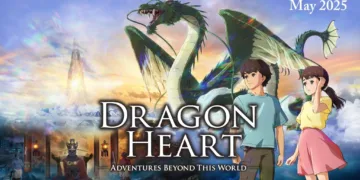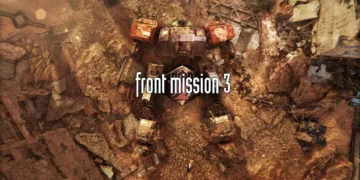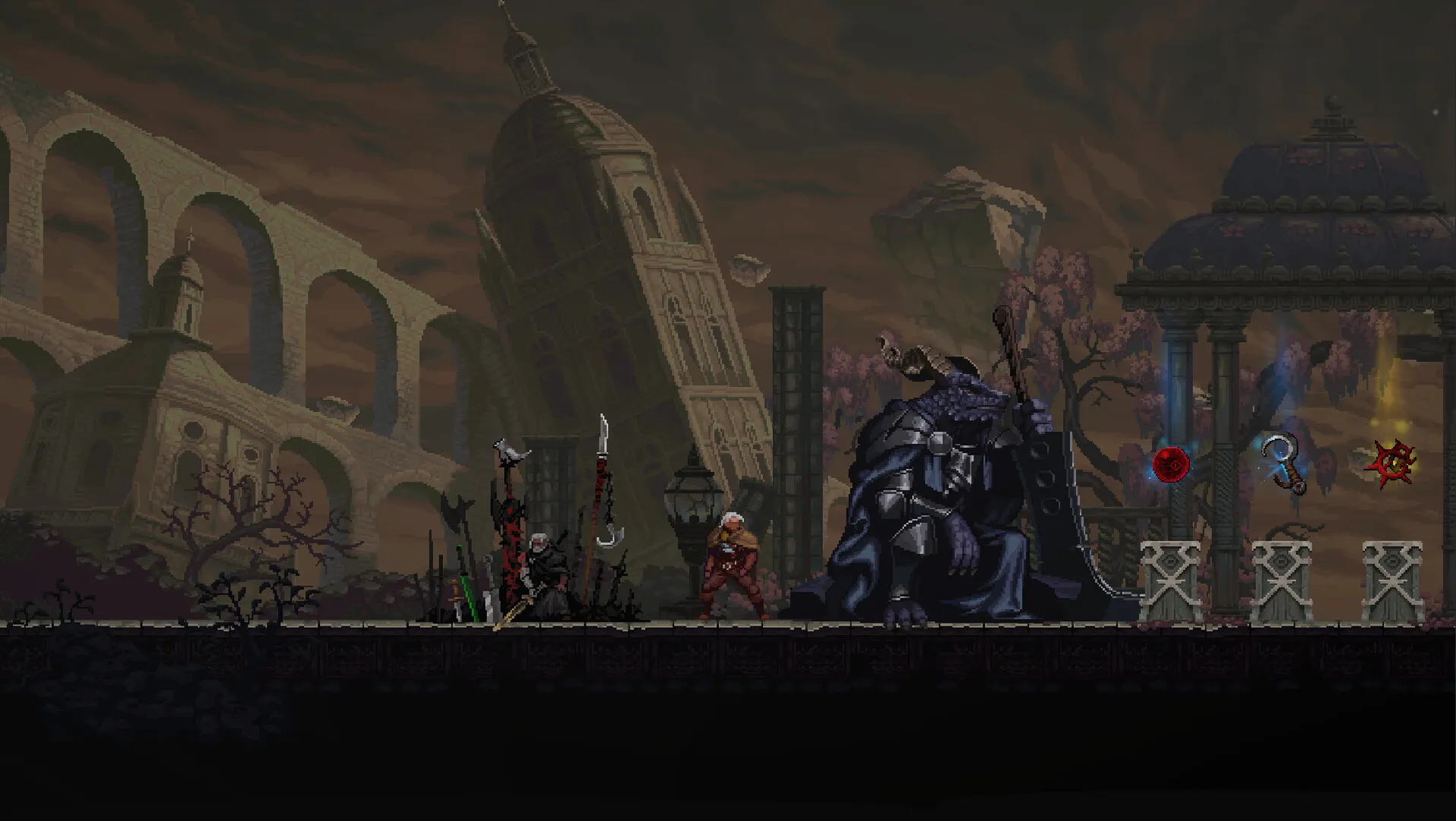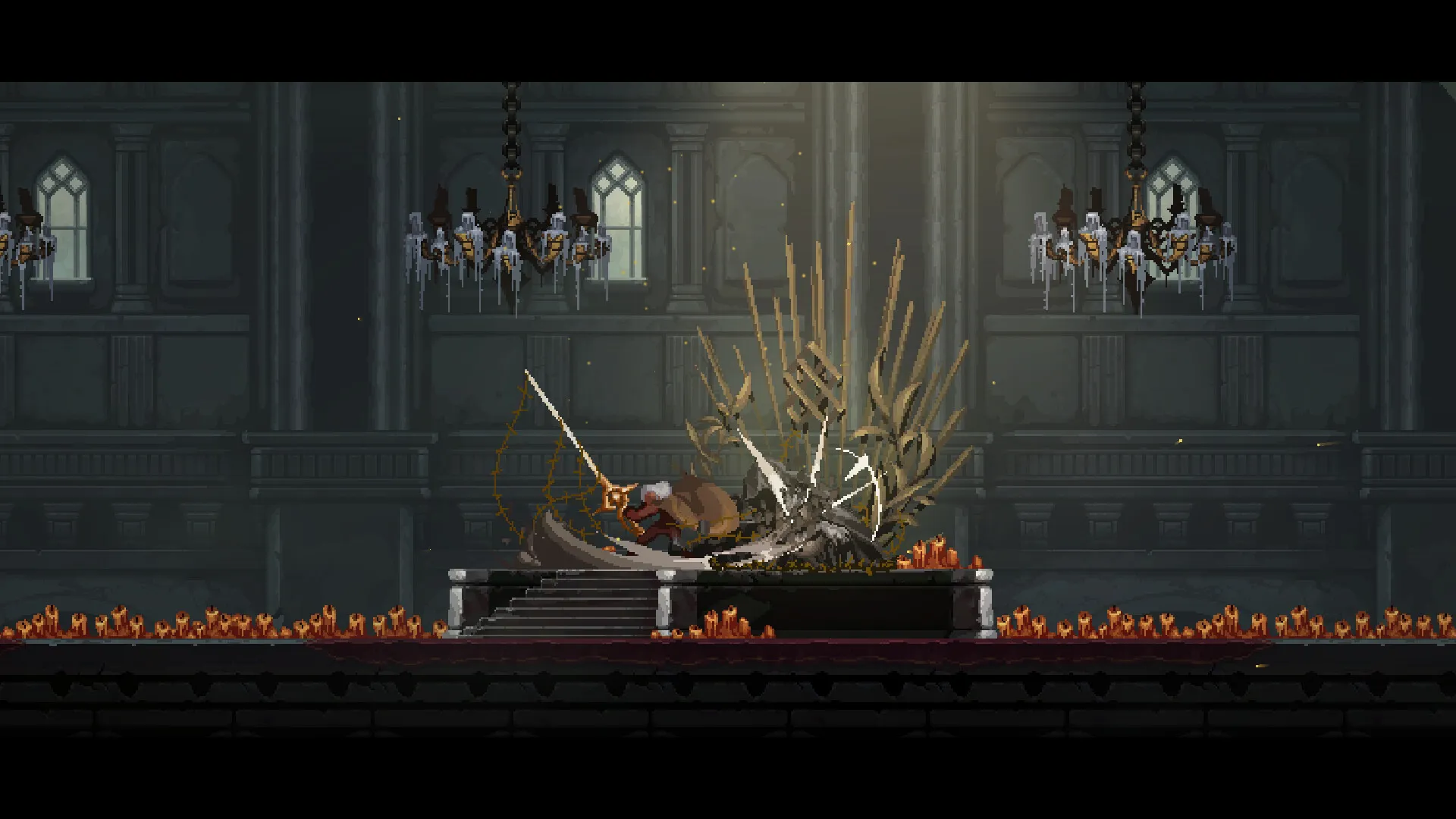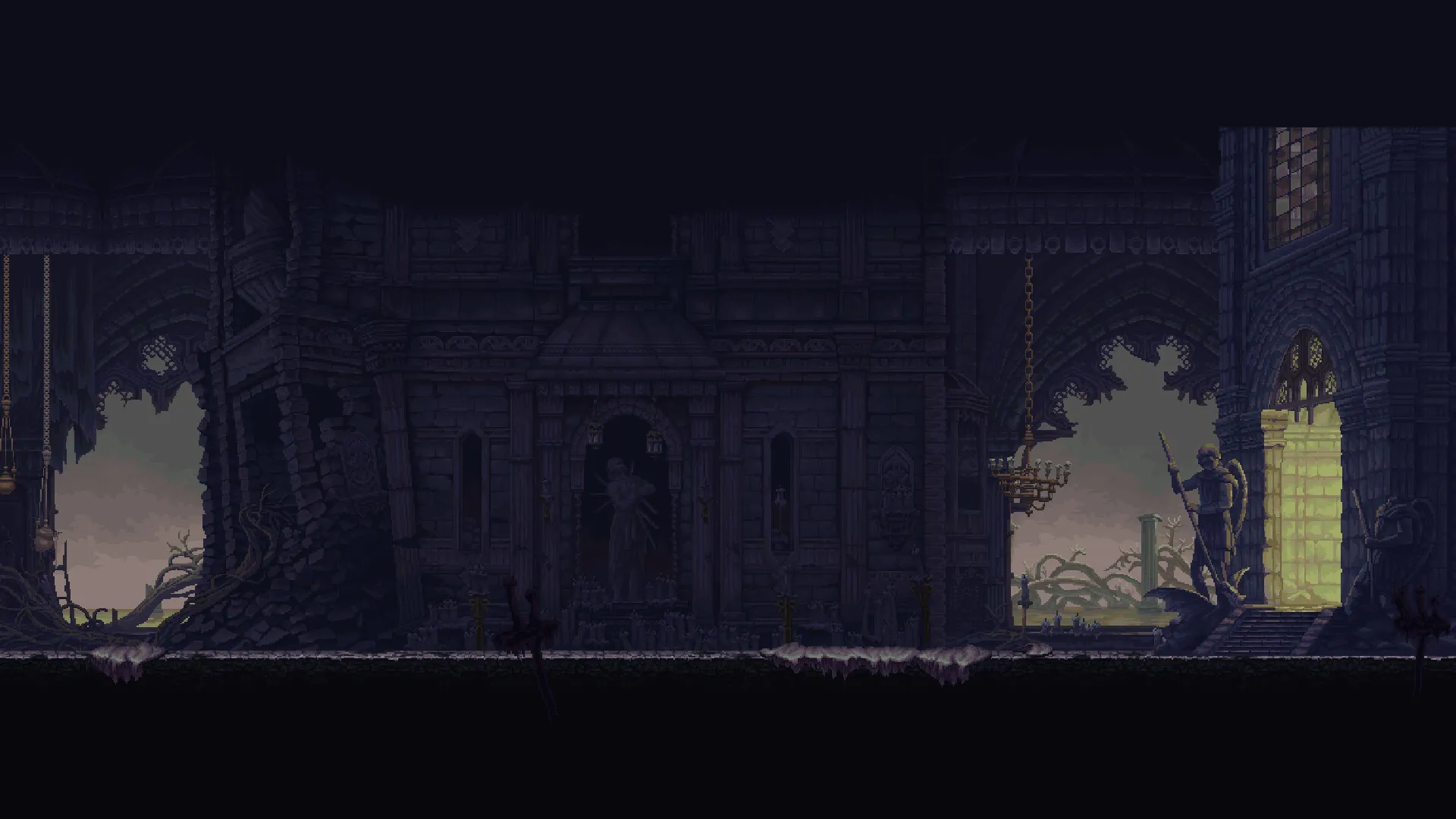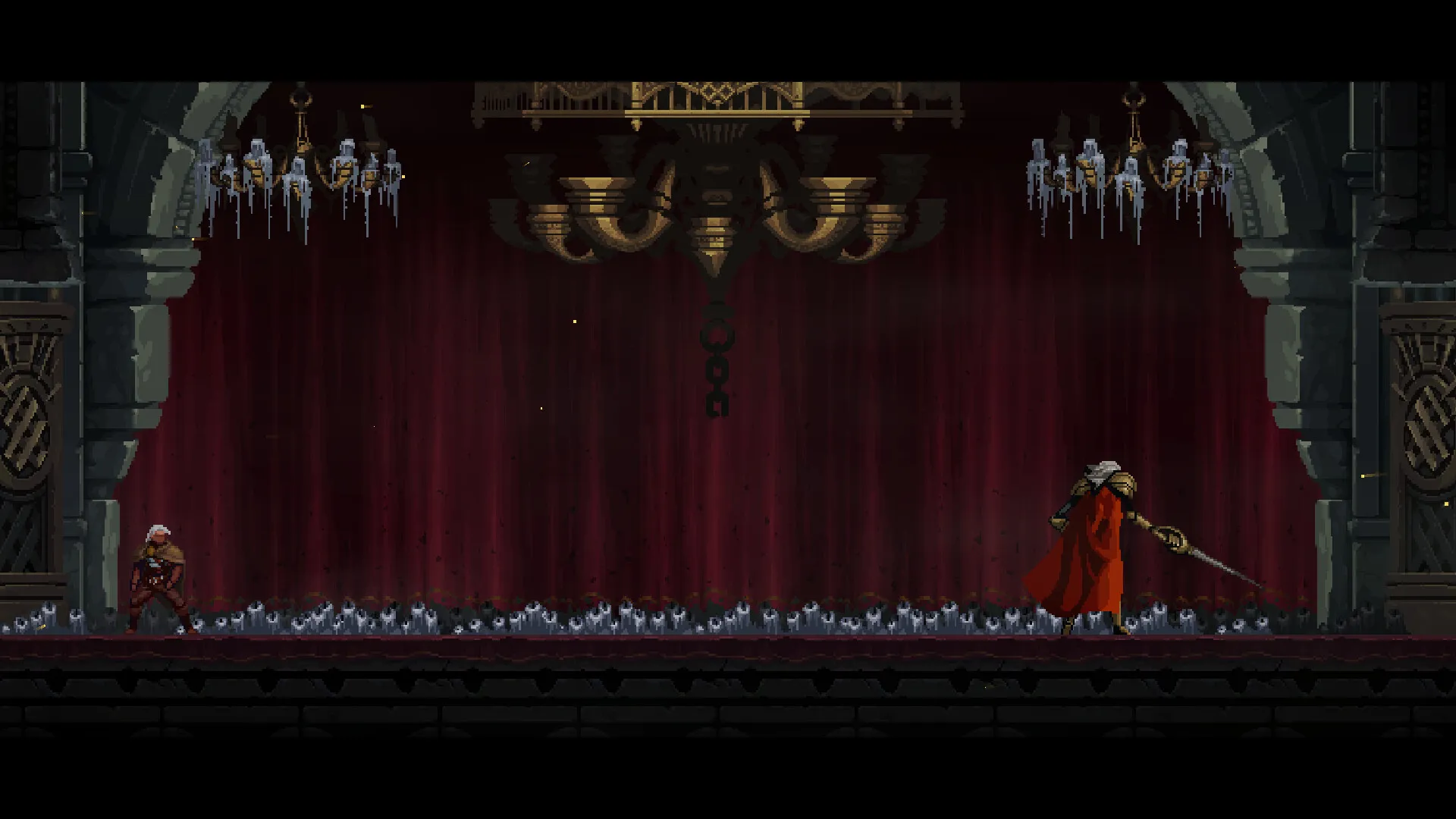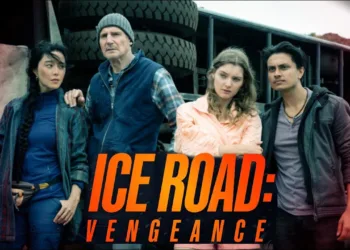You are a Successor, a deathless warrior tasked with a familiar quest: slay the corrupted dragon Guernian and close the demonic rifts tearing the world apart. This premise sets the stage for Dragon Is Dead, a 2D side-scrolling action game that builds its foundation on two well-trodden genres.
It merges the run-based, high-stakes structure of a roguelike with the intricate loot and character progression of an action RPG. The result is an experience centered on a compelling power fantasy. This is a game where you can construct a hero capable of unleashing screen-clearing elemental devastation, calling down meteors, or filling the battlefield with crackling lightning storms.
This destructive journey unfolds across a dark, moody pixel-art world filled with gruesome monsters and gothic architecture. The game immediately establishes that your goal is not simply to survive each perilous encounter. Instead, it invites you to become an architect of annihilation, piecing together an engine of destruction one piece of powerful gear at a time. The true test lies in how you assemble your power between each inevitable death.
The Cycle of Death and Power
At first, the rhythm of Dragon Is Dead feels familiar. You fight through procedurally arranged rooms within distinct biomes, defeat a formidable boss, and push forward until an overwhelming force inevitably sends you back to the start.
Upon death, the expected penalties apply: your experience points, gold, and any temporary artifacts collected during that life are stripped away. This is the quintessential roguelite loop, a cycle of trial, error, and incremental learning seen in countless titles. Yet, the game introduces a fundamental change to this formula, one that redefines the very meaning of progress within its world.
The twist is that you keep all of your gear. Every sword, helmet, and pair of magical boots remains in your possession after death. This infusion of action RPG persistence, akin to a Diablo-style loot system, grants a tangible and permanent sense of growth that is rare in the genre.
This design choice has a profound impact on the player’s journey. Discovering a legendary weapon late in a difficult run completely alters the start of the next. Imagine finding boots that summon a lightning bolt with every dodge. On your next life, you can simply dash through the opening stages, felling early foes without a single sword swing.
This exponential power creep reframes the entire experience of repetition. The early levels, once a genuine challenge, quickly become a trivial footnote as you grow stronger. Death loses much of its sting when it is followed by a swift and satisfying power trip back to where you fell. The game transforms the potential frustration of starting over into a demonstration of your own escalating strength, making each new attempt a measure of how much more powerful you have become.
The Architect of Annihilation
While your persistent gear provides the foundation for your power, the true artistry of a successful run in Dragon Is Dead lies in the temporary systems you manipulate. The character-building process is a complex, multi-layered affair that rewards careful planning and quick adaptation.
Your permanent collection of weapons and armor, with their randomized stat rolls and special properties, sets the baseline. This is the canvas upon which you paint your build. A powerful sword might define your potential, but it is the choices you make during a run that determine if you can realize it.
The primary engine for this in-run customization is the artifact system. Similar to the Boons in Hades, these are temporary upgrades that grant passive abilities and stat increases. You can hold up to nine, but their individual power is secondary to their synergies.
Each artifact belongs to one or more sets, and collecting several from the same group unlocks transformative bonuses. This system elevates decision-making beyond simply picking the strongest-looking item. The real test becomes identifying which artifact sets best complement your permanent gear and then strategically pursuing them, turning each run into a dynamic puzzle of build optimization.
This is layered on top of distinct character classes, like the magic-wielding Spellsword or the hulking Berserker, each with unique skill trees. The Spellsword, for instance, can specialize in fire, ice, or lightning, or mix the elements for a versatile approach. One run might see you become a pure pyromancer, launching fireballs and calling down meteors, while the next encourages a lightning-fast battlemage.
The sheer number of interacting systems—gear affixes, artifact sets, skill trees, runes, and more—creates a dizzying level of depth. This complexity can, however, border on obfuscation. Stats sometimes function in non-intuitive ways, such as Strength increasing your Armor rather than your Damage. At times, an expected effect from a piece of gear might fail to trigger, leaving you to question whether you’ve encountered a bug or are simply unaware of a conflicting interaction buried deep within your intricate build.
The Chaos of Combat
The moment-to-moment combat in Dragon Is Dead is a fast-paced affair built on a simple foundation. Your character moves with speed, executing basic three-hit combos and navigating vertical spaces with jumps. The most critical tool in your defensive arsenal is a dodge-roll, which provides a generous window of invincibility to weave through attacks.
This responsive, hack-and-slash core is the delivery system for the game’s complex build-crafting. When a character’s synergies align, the screen erupts in a spectacle of destruction. Entire legions of foes are deleted by cascading lightning storms, freezing explosions, and elemental dashes, creating moments where you feel less like a warrior and more like a god of war.
Boss encounters initially build upon this skillful play. They enter the stage with gory, impressive animations that effectively communicate their threat, and early fights are rewarding tests of pattern recognition and timing. As you venture deeper, however, this dynamic often shifts.
Many late-game battles devolve into pure damage checks. Both you and your opponent fill the screen with so many particle effects and overlapping attack zones that skillful dodging becomes impractical. Success is no longer about outmaneuvering the enemy; it is about hoping your numbers are bigger than theirs.
This problem is compounded by frustrating enemy and arena design. Some foes can only be damaged during their own attack animations, slowing the pace of combat to a crawl. Long-range casters snipe you from off-screen, and claustrophobic arenas make crowd control a desperate scramble.
Enemies can spawn directly behind you, leading to cheap hits. When these elements combine with a stroke of bad luck, a promising run can end not with a tactical misstep, but with an unavoidable stun-lock. In these moments, the crucial link between skill and survival feels severed.
A World Painted in Pixels and Blood
The world of Dragon Is Dead is rendered in a gorgeous, high-detail pixel art style that evokes the grim, gothic brutality of games like Blasphemous. The environmental artists have crafted a series of somber and moody biomes, from haunted forests to ancient dungeons, that effectively establish a decaying, hostile atmosphere. The quality of the animation often supports the gameplay, with a satisfying visual flourish on the dash and clear telegraphing for many enemy attacks that aids in learning combat patterns.
However, this commitment to a detailed aesthetic can sometimes undermine gameplay clarity. Certain enemy sprites are rendered as collections of indistinct pixels, making it difficult to read their movements or to confirm if your own attacks are connecting. At times, important interactive elements like platforms or non-player characters can blend into the ornate backgrounds, causing momentary confusion.
The audio design follows a similar pattern of being effective but limited. The soundtrack successfully sets the tone, shifting from quiet, ambient strings in the levels to bombastic, orchestral pieces that give weight to boss encounters. The music itself is well-composed for its purpose, yet it lacks variety. As you undertake run after run, the same melodies repeat frequently, and the score does not evolve to match your progression through the world, making it feel static over time.
Faltering Lore and Empty Spaces
For all the depth found in its character-building, the world of Dragon Is Dead feels surprisingly hollow. The narrative delivery is unquestionably the game’s weakest element. While the premise is serviceable, its story is dispensed through unvoiced, clunky dialogue that leans heavily on direct exposition.
The writing is often marred by awkward phrasing and grammatical mistakes that shatter immersion, lending the storytelling an amateurish quality that makes skipping through conversations an almost reflexive action. Where games like Hollow Knight or the Souls series weave their lore into the environment and item descriptions, inviting discovery, Dragon Is Dead simply tells you its story in the least engaging way possible.
This sense of untapped potential extends to the level design. Functionally, each stage is little more than a series of combat arenas to be cleared before moving to the next. The game presents vast, multi-leveled rooms that hint at the possibility of exploration or intricate platforming challenges, but they are rarely more than empty space.
There are no hidden paths to uncover or environmental puzzles to solve. This is a significant missed opportunity; the game builds environments that look like they should be explored but provides no mechanical reason to do so. The world, despite its visual splendor, becomes a simple backdrop for the combat. The focus is so squarely on the intricate mechanics of the character that the world itself is left feeling like a beautiful, but ultimately lifeless, stage.
The Review
Dragon is Dead
Dragon Is Dead offers an intoxicating loop of power progression, brilliantly merging the persistent loot grind of an ARPG with the punishing cycle of a roguelike. The deep character-building and spectacular combat create moments of god-like destructive fantasy. However, this mechanical excellence is tethered to a world that feels lifeless, held back by amateurish writing and empty, linear level design. It is a game with a thrilling, complex heart whose potential is constrained by a shallow body, offering a fantastic experience for players who value mechanics above all else.
PROS
- Deep and complex character-building with meaningful synergies.
- Unique progression system where keeping gear after death feels powerful.
- Visually spectacular combat that delivers a strong power fantasy.
- Gorgeous, high-detail pixel art and moody atmosphere.
CONS
- Narrative and writing are clunky, poorly translated, and unengaging.
- Late-game combat can devolve into chaotic "damage checks" over skill.
- Level design is linear and underutilized, with large but empty spaces.
- Visual clarity can suffer during hectic moments.

























